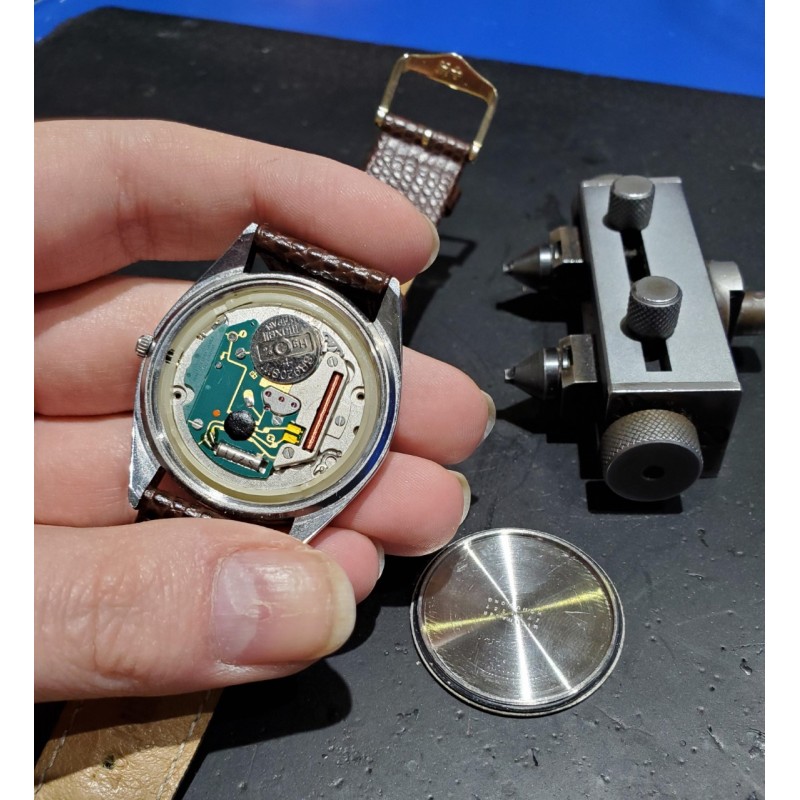

When light falls on the dial, the watch will resume normal operation. In some models both the minute and second hands stop (Power Save 1 mode). In order to avoid losing energy, the second hand stops at the position of 12 o'clock. The solar cells stop generating electricity if a lack of light energy occurs. Therefore, regular maintenance by qualified watchmakers or authorised service centres is recommended in order to extend the life of your watch. The gears in watches also wear little by little.

Gaskets age and deteriorate while being used or even just in storage. With regard to water resistant models: in order to maintain the water resistance quality, we recommend you replace the gaskets in regular intervals. Does this mean Eco-Drive watches are completely maintenance free? Eco-Drive watches do not need batteries replaced. It is speculated that initial capacities may wane up to 20 per cent over 20 years however, we do not expect this to interfere with the use of the watch. What are the life spans of solar cells and rechargeable cells?Īccording to our data, both solar and rechargeable cells will last more than 10 years. We recommend you expose your Eco-Drive to the sunlight from time to time. Also, in winter, watches tend to be kept under sleeves of overcoats or thick jackets that hinder the absorption of light energy. Recharging varies according to the illuminance from the source of light: in winter the required time for recharging is longer than summer, because the illuminance of the sun is weaker. Does recharging time vary with the seasons? As long as the dial is exposed to light regularly, the watch rarely stops. Can Eco-Drive watches be recharged under fluorescent lamps? Once exposed to light, the hands move very quickly to catch up to the correct time, which has been tracked internally by the watch. Why?Įco-Drive watches with the Power Saving feature stop the second hand to save energy when away from light (in the dark, a drawer or under sleeves, for example). The second hand runs very quickly, then resume normal operation. After recharging and adjusting your watch, the second hand will resume normal operation.

The irregular interval movement indicates that the time shown is incorrect because the watch stopped once then started again. This is the Time Setting Warning feature. The second hand moves at irregular intervals, such as 1-second, 1-second and 2-second. Once the battery is fully charged, the second hand will resume normal operation. This is the Insufficient Charge Warning feature, and indicates the battery is not yet charged enough. The second hand jumps in 2-second intervals.

Estimates are detailed in your instruction book. The amount of charging time required varies depending on model and light conditions. Your Eco-Drive watch will charge in one third of the time if you pull out the crown while charging under normal charging conditions. If your watch has a battery hatch (like in the below image), grab a coin and twist that sucker off.When the Eco-Drive watch stops, what should be done to restart it?Įxpose the Eco-Drive to the light. Apply some upward friction, and the back should pop open. Now, find the little notch in your snap back case and slide the case knife in there. seat the case back holder in a vice, and seat the case in the case back holder). If it has a snap back, follow similar steps until you get to the point where you need to actually open the case (i.e. If it has a screw back, follow these steps to open it. Step 2: Open the case backįirst, figure out if your watch has a screw back or a snap-back. If you're very, very lucky and you own something like a CWC or MWC watch (or certain Timexes), there might be a battery hatch. If it's a snap back, there will be a small notch or lip that's used to pop it off. If your watch has a screw back, you should see several notches or a raised edge that's used in conjunction with a tool to open it. A cloth not only cleans your watch, but provides a surface on which to work in a pinch.


 0 kommentar(er)
0 kommentar(er)
